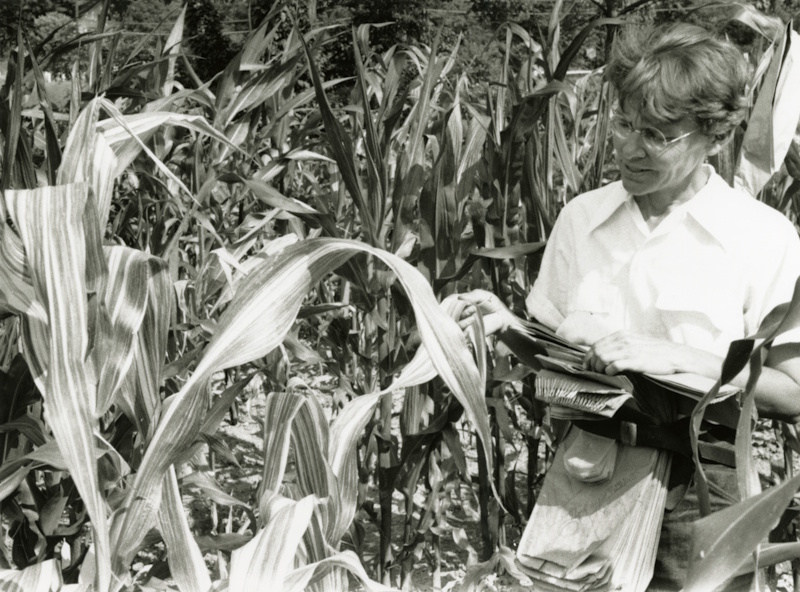Eloise Barber celebrates the life and work of Barbara McClintock, a Foreign Member of the Royal Society whose research fundamentally reshaped the science of genetics.
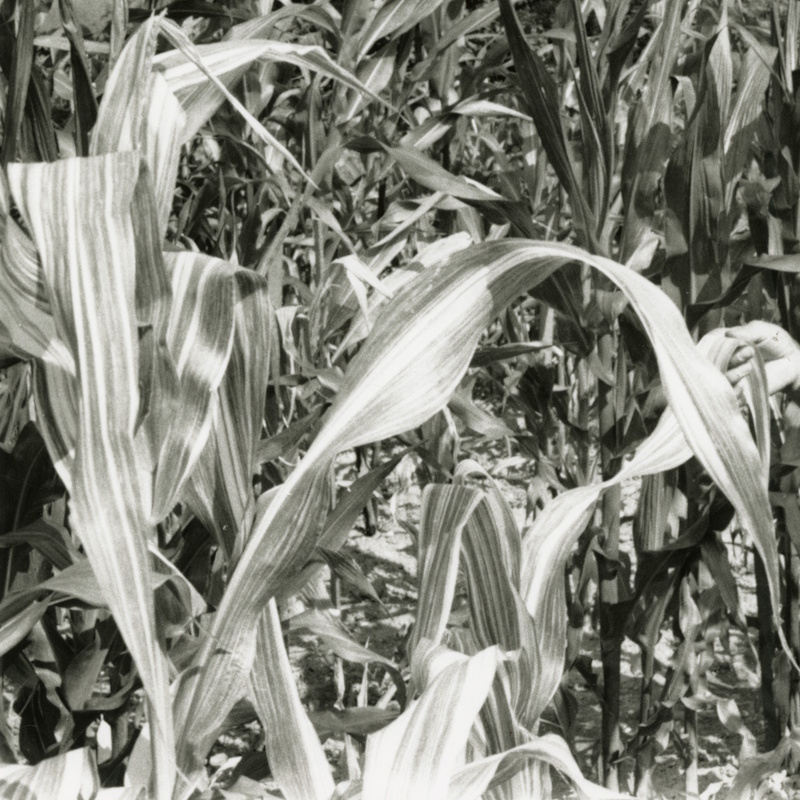
In 1945, the Royal Society elected its first female Fellows, marking the end of a centuries-long period of exclusion of women from its ranks. Eighty years on, that milestone invites us to reflect on pioneering women across the sciences whose work transcended barriers. Among them stands American geneticist Barbara McClintock (1902-1992), elected a Foreign Member of the Royal Society in 1989, whose research fundamentally reshaped genetics and whose career mirrored the perseverance and independence of the early female Fellows.
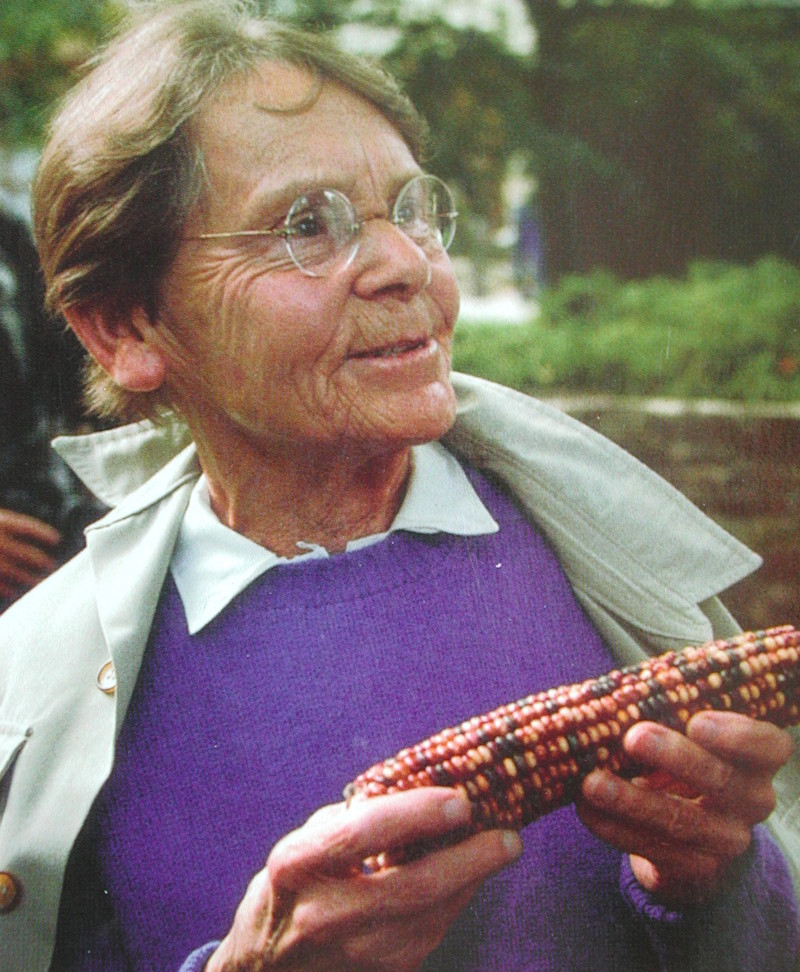 Barbara McClintock (Wikimedia Commons, Cristian472735, CC BY-SA 4.0)
Barbara McClintock (Wikimedia Commons, Cristian472735, CC BY-SA 4.0)
Barbara McClintock was born in Hartford, Connecticut, in 1902 and grew up between Connecticut and New York. In high school, she discovered a passion for science, but her ambitions met with resistance at home. Her mother feared university would make her ‘unmarriable’; however, her father supported her decision to apply, and in 1919 she entered Cornell University’s College of Agriculture.
At the time, women at Cornell could not major in genetics, so McClintock studied botany. But genetics soon pulled her in: she took the only undergraduate course available, impressing the instructor enough to be invited into the graduate class, a pivotal moment that set the course of her career.
McClintock combined genetics with cytology, the study of cells, to explore how chromosomes functioned. Maize became her lifelong research topic. Each kernel on a cob is a separate embryo with its own genetic make-up, making maize a powerful tool for tracking inheritance. In 1931, working with Harriet Creighton, she provided the first experimental proof that genes are physically located on chromosomes and can be exchanged by ‘crossing over’.
Despite her early success, McClintock’s path was far from smooth. As an assistant professor at the University of Missouri in the late 1930s, she was excluded from faculty meetings and denied opportunities given to her male colleagues. Unwilling to accept such constraints, she left in 1941 for the Carnegie Institution’s Department of Genetics at Cold Spring Harbor, New York.
At Cold Spring Harbor, McClintock thrived in a rare environment of scientific freedom. She refined her techniques for visualising maize chromosomes and uncovered an extraordinary phenomenon: genes could move. These ‘jumping genes’, or transposable elements, could change position on the chromosome, switching nearby traits on or off. This challenged the prevailing belief that the genome was a fixed, linear code.
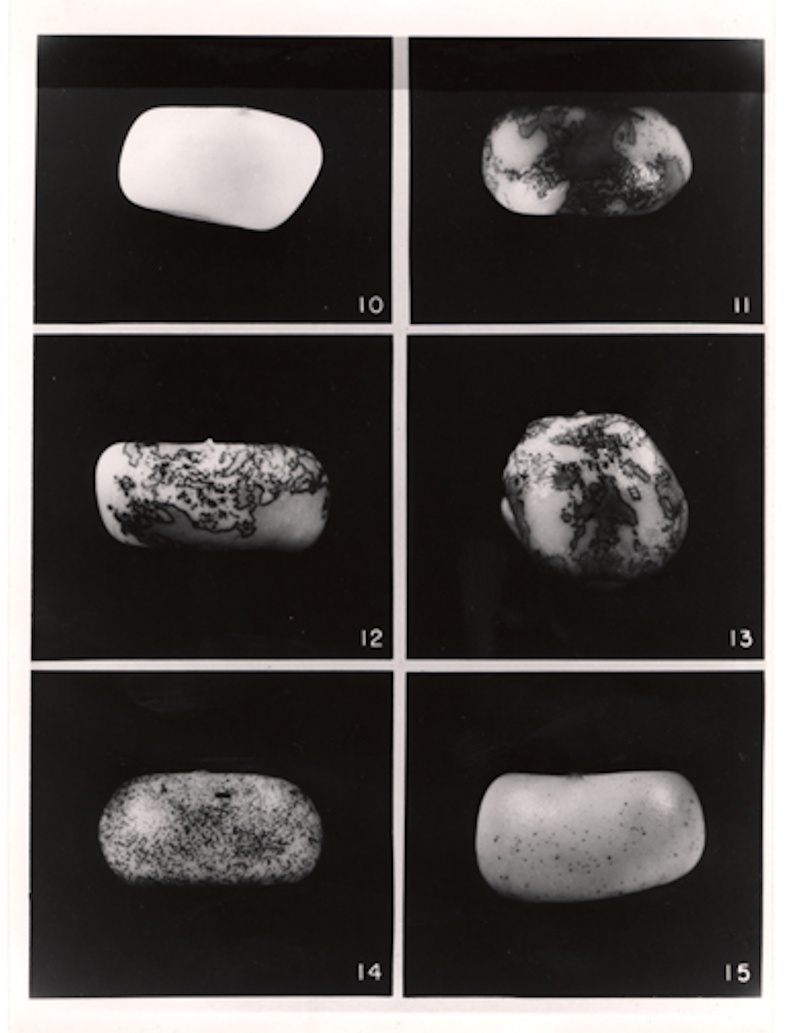 Corn mosaic (public domain, via Wikimedia Commons)
Corn mosaic (public domain, via Wikimedia Commons)
In 1950, she published ‘The origin and behavior of mutable loci in maize’ in the Proceedings of the National Academy of Sciences, introducing the concept of gene transposition. The reception was chilly: many scientists were puzzled, others openly hostile. McClintock, never one for academic politics, chose not to defend her ideas aggressively. Instead, she continued her work quietly, often sharing her findings only with trusted colleagues. ‘When you know you are right, you don’t care’, she later said.
Time would prove her right. By the 1970s, molecular biology had caught up, and her ‘jumping genes’ were recognised as a cornerstone of modern genetics, with implications for everything from antibiotic resistance to cancer research. In 1983, at the age of 81, McClintock was awarded the Nobel Prize in Physiology or Medicine, the first woman to receive this prize unshared. She accepted the honour with characteristic understatement, continuing her morning walnut-picking walk on the Cold Spring Harbor campus before facing the press.
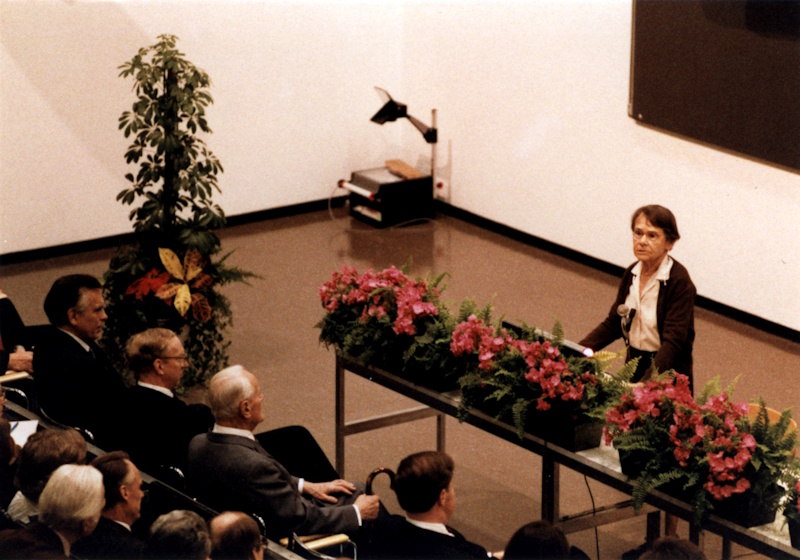 Barbara McClintock giving her Nobel Lecture, 1983 (public domain, via Wikimedia Commons)
Barbara McClintock giving her Nobel Lecture, 1983 (public domain, via Wikimedia Commons)
McClintock’s achievements extended beyond the Nobel. She was the first woman to receive the US National Medal of Science, the third woman elected to the US National Academy of Sciences, and the first female president of the Genetics Society of America. She also anticipated what is now known as epigenetics, changes in gene activity without altering the underlying DNA sequence.
McClintock once remarked, ‘I just have been so interested in what I was doing and it’s been such a pleasure… I’ve had a very, very satisfying and interesting life.’ Her legacy is one of intellectual courage and personal independence, refusing to accept limits on what she could study, say or achieve.
Eighty years after the Royal Society welcomed its first female Fellows, McClintock’s story resonates as both a scientific triumph and a reminder that the freedom to follow one’s curiosity is as vital to discovery as any instrument in the laboratory. Her ‘jumping genes’ reshaped genetics, but it was her own ability to leap over societal expectations that made her an enduring figure in the history of science.

